[Newsbits] 23.01.2024: Malathion Pesticide, Khanjar Exercise & more


The Design-Linked Incentive (DLI) scheme, initiated by the Indian government, is a strategic move to bolster the domestic semiconductor design industry. Its primary objectives include reducing dependence on semiconductor imports, especially from China, and fostering growth in this high-tech sector. Despite its promising goals, the scheme has experienced setbacks, notably in reaching its startup support targets. Key challenges involve limited foreign investment, modest financial incentives, and the substantial costs associated with long-term semiconductor research and development. A concerted effort to reevaluate and enhance the scheme’s financial and structural aspects could pave the way for India to emerge as a significant player in the global semiconductor industry.
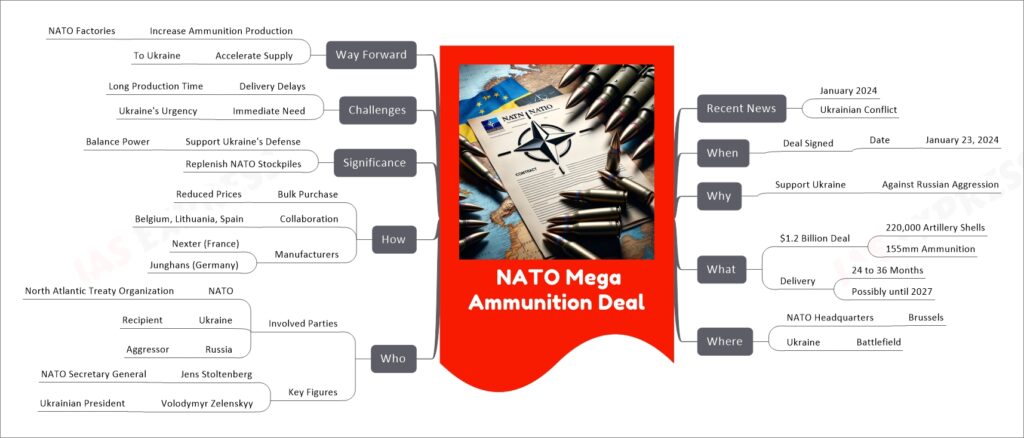
The NATO Mega Ammunition Deal, signed on January 23, 2024, involves a $1.2 billion agreement for the purchase of 220,000 rounds of 155mm artillery ammunition. This deal is a strategic move by NATO to support Ukraine in its ongoing conflict with Russia, aiming to replenish depleted stockpiles and bolster Ukraine’s defense capabilities. The contract indicates a delivery timeline of 24 to 36 months, potentially extending until 2027. Key players in this agreement include NATO, with Jens Stoltenberg as the Secretary-General, and Ukraine, led by President Volodymyr Zelenskyy. The deal highlights the challenges faced by Ukraine in terms of immediate ammunition needs and the anticipated delays in delivery, emphasizing the necessity for NATO to increase its ammunition production and expedite the supply process to Ukraine.
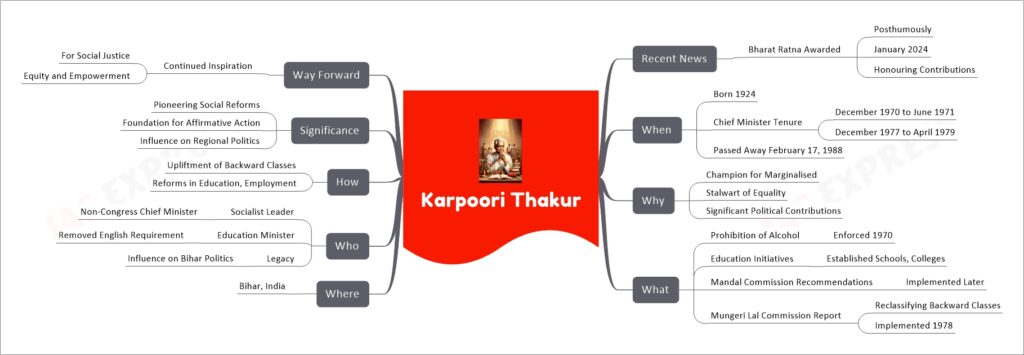
Karpoori Thakur, a revered figure in Indian politics, is best known for his contributions towards the upliftment of backward classes and marginalized communities. Born into a marginal farmer’s family in 1924, Thakur rose to prominence as a socialist leader and served as the Chief Minister of Bihar. His tenure is notable for several key initiatives, including the total prohibition of alcohol and the establishment of educational institutions in underdeveloped regions. Thakur was instrumental in advocating for the rights of the Other Backward Classes (OBC), laying the groundwork for future affirmative action policies in India. His efforts led to the implementation of the Mandal Commission recommendations and the reclassification of backward classes. In January 2024, Thakur was posthumously honored with the Bharat Ratna, India’s highest civilian award, recognizing his enduring efforts for social justice and equality.
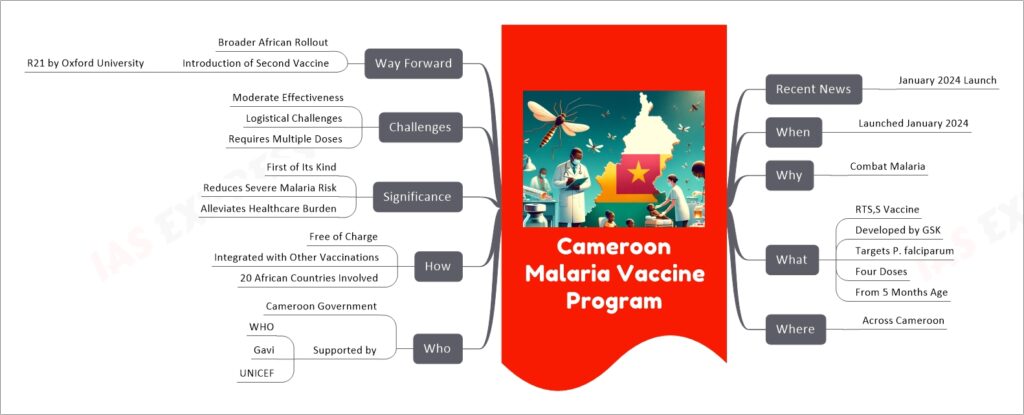
In January 2024, Cameroon launched the world’s first malaria vaccine program for children, marking a significant milestone in public health. The program utilizes the RTS,S vaccine, developed by GSK, to target the deadliest strain of malaria, P. falciparum. This vaccine, which requires four doses starting from around 5 months of age, will be offered free of charge and integrated with other routine child immunizations. While the vaccine’s effectiveness is moderate, it represents a critical step towards reducing the malaria burden in Africa, where the disease has a profound impact. Challenges such as logistical distribution and ensuring complete immunization remain, but the program’s launch is seen as a major achievement in the fight against malaria.
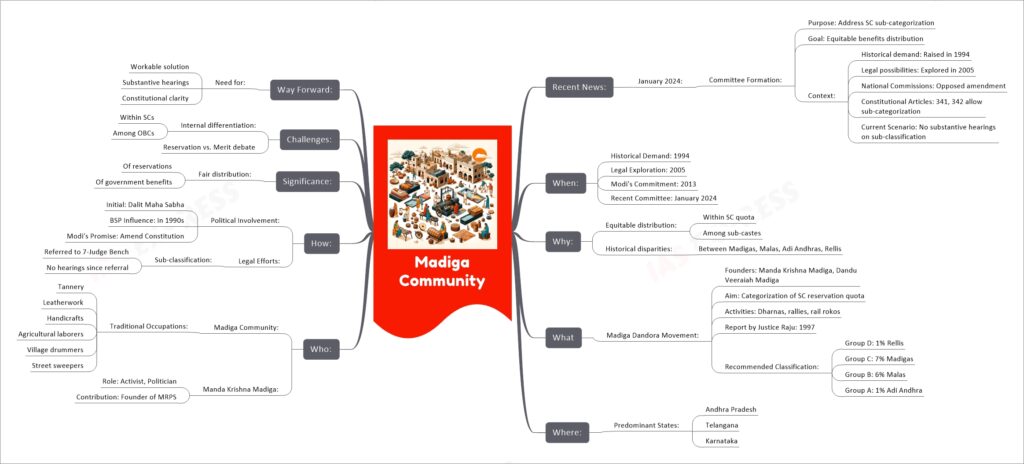
The Madiga community, primarily found in the southern Indian states of Andhra Pradesh, Telangana, and Karnataka, is historically associated with occupations like tannery, leatherwork, and handicrafts. In recent news, a committee was formed in January 2024 to address the sub-categorization of Scheduled Castes (SCs) for equitable benefits distribution. This move follows historical demands dating back to 1994, seeking better representation and fair distribution of reservations and government benefits among various SC sub-castes. The Madiga community, through movements like the Madiga Dandora movement, has played a significant role in advocating for these changes. The community’s struggles and demands highlight the ongoing debates around caste-based reservations, internal differentiation within SCs, and the challenges in achieving equitable distribution of resources. The way forward includes finding a workable solution, conducting substantive hearings, and gaining constitutional clarity on these issues.
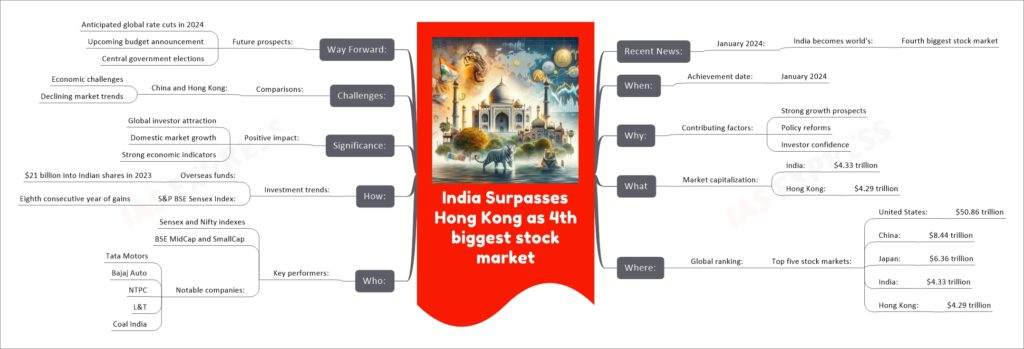
India’s recent milestone of surpassing Hong Kong to become the world’s fourth-largest stock market in January 2024 is significant. This achievement was driven by strong growth prospects, policy reforms, and high investor confidence. With a market capitalization of $4.33 trillion, India now ranks behind the United States, China, and Japan. Key performers in this growth include the Sensex and Nifty indexes, and companies like Tata Motors, Bajaj Auto, and NTPC. Overseas investment has played a major role, with more than $21 billion poured into Indian shares in 2023. This growth stands in contrast to the economic challenges faced by China and Hong Kong. Looking forward, India’s stock market remains optimistic with potential global rate cuts in 2024 and key political and economic events on the horizon.

In January 2024, the Canadian government implemented a cap of approximately 360,000 on new international student visas for a two-year period to address challenges like housing shortages and to improve the overall quality of education and student support resources. This initiative includes changes to the Post-Graduation Work Permit Program and introduces new requirements like the attestation letter for study permit applications. The changes also affect open work permit eligibility for spouses of international students. These measures are part of Canada’s effort to ensure a balanced and sustainable approach to international education, focusing on both the well-being of students and the needs of the Canadian education system.
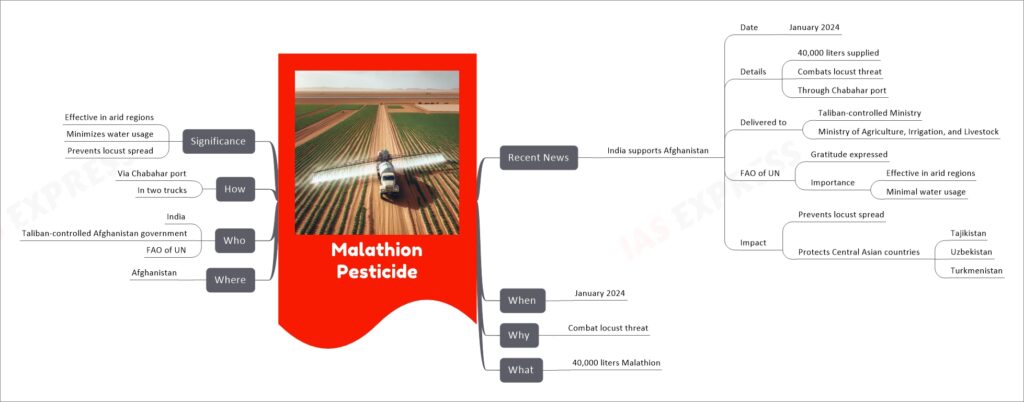
In summary, Malathion is a powerful pesticide that India recently supplied to Afghanistan to combat a severe locust threat. This aid not only addresses the immediate issue within Afghanistan but also plays a critical role in preventing the spread of locusts to neighboring Central Asian countries, thereby protecting regional food security and agricultural stability.
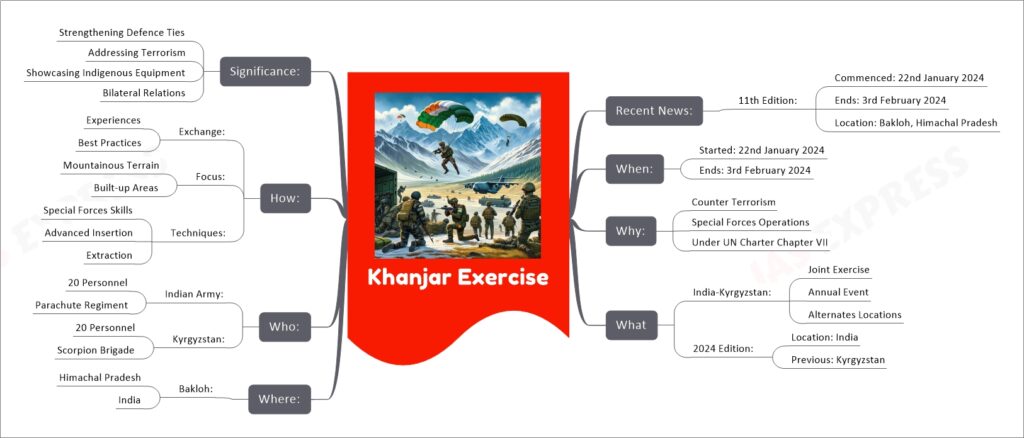
The Khanjar exercise is the 11th edition of a joint special forces exercise between India and Kyrgyzstan. It commenced on 22nd January 2024 and is scheduled to conclude on 3rd February 2024. The exercise is taking place in Bakloh, Himachal Pradesh, India. This annual event alternates locations between the two countries. The exercise includes 20 personnel from the Indian Army’s Parachute Regiment and 20 from Kyrgyzstan’s Scorpion Brigade. Its aim is to share experiences and best practices in counter-terrorism and special forces operations, particularly in mountainous terrains and urban areas. The exercise is part of the cooperation under Chapter VII of the United Nations Charter and focuses on developing special forces skills and advanced techniques in insertion and extraction. It plays a significant role in strengthening defense ties, addressing international terrorism, showcasing state-of-the-art indigenous defense equipment, and boosting bilateral relations between India and Kyrgyzstan.
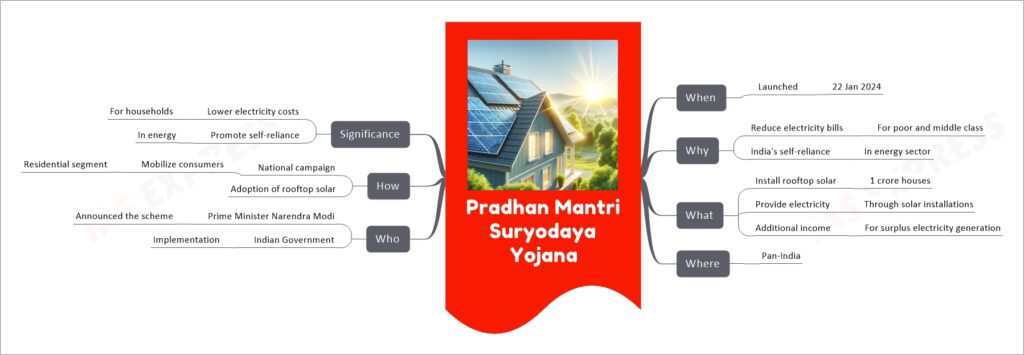
The Pradhan Mantri Suryodaya Yojana is a new initiative announced by Indian Prime Minister Narendra Modi, targeting the installation of rooftop solar panels on one crore houses. This scheme is designed to reduce electricity bills for the poor and middle class and promote India’s self-reliance in the energy sector. It also offers the potential for additional income through surplus electricity generation. The plan was launched on January 22, 2024, and involves a nationwide campaign to encourage the adoption of rooftop solar among residential consumers. The significant benefits of the scheme include lower electricity costs for households and the promotion of energy self-reliance.
If you like this post, please share your feedback in the comments section below so that we will upload more posts like this.
